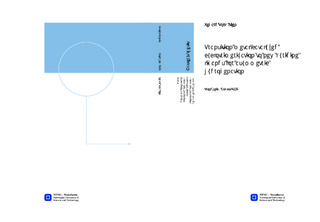| dc.description.abstract | AbstractNew fused pyridine ring systems for the application as ligands in iridium catalyzed asymmetric hydrogenation have been synthesized with cyclotrimerization as a key step. This proved to be a efficient method for varying the wanted substitution patterns in one step. Firstly, alkynenitriles 3a and 3b were synthesized from commercially available starting materials in 24 and 38% overall yields, respectively, as shown in figure 1. The yields for the individual steps are given in the figure. Figure 1: Synthesis of the alkynenitriles 3a and 3b. The starting butyn alcohol was tosylated to 1, which was further converted to the iodide 2a by a Finkelstein reaction. Iodide 2a was then reacted with ethyl cyanoacetate in an alkylation reaction to form 3a. Alkynenitrile 3b was synthesized in a similar manner from the pentyne chloride. By variyng the alkynes, were 3a and 3b converted into eight new structural entities by cyclotrimerization in 17-48% yields, as shown in figure 2. Figure 2: Cyclotrimerization of 3 with various alkynes towards 4a-h. The reactions shown in figure 2 were conducted both in a pressure vial, and by slow addition methods. CpCo(CO)2 was used as the catalyst, and activation of the pre-catalyst was done by irradiation. It was shown that usage of a pressure vial in general produced 4 in better yields than the slow addition method. When monosubstituted alkynes were employed, the reactions showed excellent regioselectivity towards the 2-substituted regioisomers, in accordance to mechanistic models described in the literature. Further improvements of the yields by using other catalysts (Fe(OAc)2/ligand, Cp*RuCl(COD) and CpCo(COD)) and reaction conditions did not succeed.Due to good results from preliminary testing of 4d as a ligand in asymmetric hydrogenations, evaluation of the pyridine esters 4a-4c as ligands were therefore wanted. Separation into pure enantiomers via the diastereomers were attempted as described in figure 3.Figure 3: Attempted separation of the enatiomers of 4b and 4c. Reduction of the pyridine esters 4b and 4c yielded the alcohols 5b and 5c in 48 and 50% yield, respectively. The alcohols 5b and 5c were further reacted with (S)-camphanic chloride to yield 1:1 diastereomeric mixtures of 6b and 6c in 47 and 32% yield, respectively. The diastereomers (R)-6b and (S)-6b was obtained pure in small amounts so that rotation could be measured, and hydrolysis back to (R)-5b and (S)-5b could be attempted. Here, total desilylation was observed. Separation of (R)-6c and (S)-6c were not successful with conventional chromatography. Based on these results is chiral preparative HPLC recommended as the method of choice for achieving pure enantiomers. The pyridines 4a-4c will be tested as ligands in asymmetric hydrogenation in Sweden, by professor Pher Andersson. | nb_NO |

